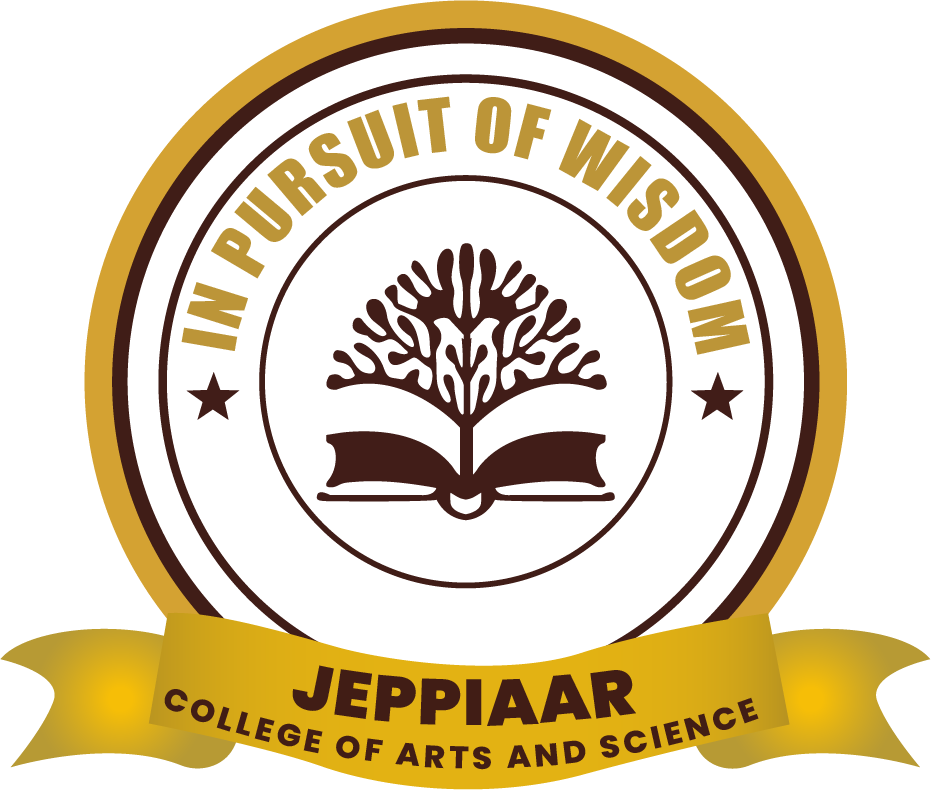
Department Vision
Sees educating the students to take part in and profit from the computer science revolution that is already under way. To help students pursue higher education, the course combines science areas like computer science, statistics, and maths.
Department Mission
- To produce, disseminate, and use computer science knowledge, especially in multidisciplinary fields that broaden the field's application and advance humankind.
- To improve communication abilities in order to secure a fulfilling job in the IT industry.
- To give students hands-on experience to supplement their theoretical knowledge.
- To train them to be successful, moral, and capable problem solvers and lifelong learners who will positively impact our region's and our country's economic well-being and be equipped to face global challenges.

Department Vision
Sees educating the students to take part in and profit from the computer science revolution that is already under way. To help students pursue higher education, the course combines science areas like computer science, statistics, and maths.
Department Mission
- To produce, disseminate, and use computer science knowledge, especially in multidisciplinary fields that broaden the field's application and advance humankind.
- To improve communication abilities in order to secure a fulfilling job in the IT industry.
- To give students hands-on experience to supplement their theoretical knowledge.
- To train them to be successful, moral, and capable problem solvers and lifelong learners who will positively impact our region's and our country's economic well-being and be equipped to face global challenges.
Menu
- Course Structure
Program Outcomes
-
Scientific knowledge:
Apply your understanding of physics, math, and computing to solve challenging scientific problems. -
Problem analysis:
Apply first principles of mathematics, natural sciences, and applied sciences to identify, formulate, research, and analyse complex scientific problems in order to reach substantiated conclusions. -
Design/development of solutions:
In order to meet specified needs, design systems or processes that take public health and safety, as well as cultural, societal, and environmental factors, into appropriate account. -
Perform inquiries into intricate issues:
For the purpose of drawing reliable findings, apply research-based knowledge and techniques, such as experiment design, data analysis and interpretation, and information synthesis. -
Utilising current computing and IT tools:
Develop, pick, and apply suitable methods, resources, and tools, such as modelling and prediction, to intricate scientific tasks while being aware of their limitations. -
The software developer and the community:
Use reasoning based on contextual knowledge to evaluate concerns related to society, health, safety, law, and culture, as well as the ensuing obligations that are pertinent to professional activity. -
Sustainability and the environment:
Show that you are aware of the importance of sustainable development and that you comprehend how professional software engineering solutions affect society and the environment. -
Ethics:
Adhere to professional ethics, duties, and standards of scientific conduct. Apply ethical concepts. -
Communication:
Convey difficult information to the scientific community and the general public in an effective manner. This includes understanding and producing reports and documentation, designing presentations, and giving and receiving clear directions. -
Project management:
Exhibit comprehension of scientific and management ideas and apply them to one's own work, as a team member and leader, to oversee projects, and in contexts involving several disciplines. -
Lifelong learning:
Understand the importance of lifelong learning and possess the skills necessary to pursue it independently in the broadest context of technological change.
Program Specific Outcomes
- Analyse and design real-time problems by using the appropriate algorithmic technique and data structure.
- Use fundamental ideas of problem-solving techniques to a range of applications.
- Create compact software by choosing the right programming language, such as C, Java, etc., depending on the kind of application being created.
- Examine and comprehend the differences between the OSI and TCP models' functions.
- Use appropriate Software Engineering approaches to solve the current issue.
- Explain the fundamentals of operating system functionality and computer architecture.
- Use HTML, Java, PHP, and VB.NET to create a website.
- Develop industry-ready abilities with Visual Basic applications and Python programming.
Learning Outcome
- Learners will:
- Gain knowledge and comprehension of the system, different programming languages, and tools needed for efficient computation-based problem solutions.
- Use cutting-edge technology resources Become knowledgeable about, adjust to, and conduct successful procedural coding meetings.
- The requirements of contemporary culture and technology Possess the necessary technical, soft, and hard abilities, as well as the necessary knowledge of computer domains.
Course Structure
Program Outcomes
-
Scientific knowledge:
Apply your understanding of physics, math, and computing to solve challenging scientific problems. -
Problem analysis:
Apply first principles of mathematics, natural sciences, and applied sciences to identify, formulate, research, and analyse complex scientific problems in order to reach substantiated conclusions. -
Design/development of solutions:
In order to meet specified needs, design systems or processes that take public health and safety, as well as cultural, societal, and environmental factors, into appropriate account. -
Perform inquiries into intricate issues:
For the purpose of drawing reliable findings, apply research-based knowledge and techniques, such as experiment design, data analysis and interpretation, and information synthesis. -
Utilising current computing and IT tools:
Develop, pick, and apply suitable methods, resources, and tools, such as modelling and prediction, to intricate scientific tasks while being aware of their limitations. -
The software developer and the community:
Use reasoning based on contextual knowledge to evaluate concerns related to society, health, safety, law, and culture, as well as the ensuing obligations that are pertinent to professional activity. -
Sustainability and the environment:
Show that you are aware of the importance of sustainable development and that you comprehend how professional software engineering solutions affect society and the environment. -
Ethics:
Adhere to professional ethics, duties, and standards of scientific conduct. Apply ethical concepts. -
Communication:
Convey difficult information to the scientific community and the general public in an effective manner. This includes understanding and producing reports and documentation, designing presentations, and giving and receiving clear directions. -
Project management:
Exhibit comprehension of scientific and management ideas and apply them to one's own work, as a team member and leader, to oversee projects, and in contexts involving several disciplines. -
Lifelong learning:
Understand the importance of lifelong learning and possess the skills necessary to pursue it independently in the broadest context of technological change.
Program Specific Outcomes
- Analyse and design real-time problems by using the appropriate algorithmic technique and data structure.
- Use fundamental ideas of problem-solving techniques to a range of applications.
- Create compact software by choosing the right programming language, such as C, Java, etc., depending on the kind of application being created.
- Examine and comprehend the differences between the OSI and TCP models' functions.
- Use appropriate Software Engineering approaches to solve the current issue.
- Explain the fundamentals of operating system functionality and computer architecture.
- Use HTML, Java, PHP, and VB.NET to create a website.
- Develop industry-ready abilities with Visual Basic applications and Python programming.
Learning Outcomes
- Learners will:
- Gain knowledge and comprehension of the system, different programming languages, and tools needed for efficient computation-based problem solutions.
- Use cutting-edge technology resources Become knowledgeable about, adjust to, and conduct successful procedural coding meetings.
- The requirements of contemporary culture and technology Possess the necessary technical, soft, and hard abilities, as well as the necessary knowledge of computer domains.


